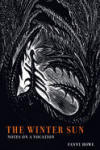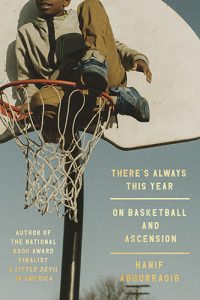The Winter Sun
Fanny Howe, author of more than two dozen books of fiction and poetry and two collections of essays, comes forth with a poignant new collection of essays in The Winter Sun: Notes on a Vocation. Hers is an idea-driven collection that reveals her pursuit of the writing life, her “vocation that has no name.” The Winter Sun is ultimately a necessary work that finds its own moment in time both by looking back to trace the flight pattern Howe has traversed as an author, and by analyzing the means at which we come to arrive in the present.
Fanny Howe, author of more than two dozen books of fiction and poetry and two collections of essays, comes forth with a poignant new collection of essays in The Winter Sun: Notes on a Vocation. Hers is an idea-driven collection that reveals her pursuit of the writing life, her “vocation that has no name.” The Winter Sun is ultimately a necessary work that finds its own moment in time both by looking back to trace the flight pattern Howe has traversed as an author, and by analyzing the means at which we come to arrive in the present.
Time as past, present, future and eternity recurs throughout the nine essays, which tend to build upon one another: each essay provides a background for the material that follows. In this way, each work in the collection is dependent on the others to form a coherent whole, even though each could well stand alone. Together, the essays read like the parts of a symphony, with recurring themes and counterpoints providing balance and support for those found in other sections. Time, for instance, is the trope that appears with some regularity, initially in “The Message,” whose opening reveals a perspective concerning the nature of the individual as it can be interpreted against past, present and future, along with that of the world and its inhabitants:
If you could take my hand and lead me along the streets and paths with your free hand outstretched and finger pointing to a future place and say, That is where we are going. Then even if what I saw ahead was chaos and pain, I could think, There is no reason to fear after all.
If you could say, We will have to travel along separate roads battered by tumultuous weather, disappointment, starvation, hospitals, jails, and physical pain, but we are going There, to that point you see up ahead. There is where we will be together at the end.
Look, see our future out there?
Then I would be able to say now, All will be well.
Of events to come, Howe writes, “The future is only the past turned around to look at itself.” It is this sensibility – that of the blurring of past with present – that informs much of her perception. From her World War II childhood through her involvement in the Civil Rights movement, Howe writes the history of her experience.
The events comprising the fabric of that history and thus her path as a writer – her experience growing up in World War II Boston, her father’s position as a defense attorney for Harvard professors accused of charges by the House Un-American Activities Committee, her friendship with Robert Lowell, her meeting the Dalai Lama, and many more – provide her with a forum for discourse. Light functions as a central metaphor, informing Howe’s early experience. She describes her first sense memories as culminating ultimately in a synaesthesia, with the audible, visible and other senses working in concert to form a hypersensitive perception. In “Branches” she writes,
It was through my window facing onto [an Episcopal convent] that the sun fell around the walls as a living presence that I called (secretly) God. Whether it was cold, yellow, white, warm, orange, or a spread of violet, that light was my surrounding other. I now suppose it was equivalent to the geistige that the philosopher Edith Stein describes as being always present to consciousness; it refused to go away, and it refused to be located.
As an early sensory experience, light paralleled the events of the wartime climate and illuminated the young author’s sensibility. The dramatic Boston sky is compared directly with the events of war (“The war contributed to every shadow and drop”), and the light without is a near-physical presence. The awakening of her consciousness to the natural world as an entity endowing her development lends to discourse on the individuation of consciousness and identity, which is formed “Like the sky dappling the cover of a river with refractions and reflections of all kinds.” The sun, its light, is an influence over all.
Jacques Lusseyran, author of And There Was Light, who shared a similar fascination with light, was blinded in early childhood. In “Person, Place, and Time,” Howe writes of the French author that “The first thing he discovered, soon after his accident, was that there was a source of light that was not the sun; it hid within his body; he was flooded by it and because of it, he felt the presence of others.” The internal light may be read as spirit, or consciousness, or perhaps even a state of self-awareness. Howe ultimately explores the metaphor of light and of consciousness, how it informs the individual, and the individual’s place in history, and time.
In circumscribing the events of her life, Howe narrates a past that lends to thoughtful reflection, both in her own writing and for the reader. Her style juxtaposes narrative with insight and experience, allowing the reader to draw his own conclusions. In offering up these poignant moments from the past, Howe consistently connects them with the present. Her writing is multi-layered and invites close reading just as it rewards re-reading.
Through an exploration of the writings of Simone Weil, Michel de Certeau, Jacques Lusseyran, Sara Grant, Antonia White, Socrates and others, Howe probes questions of the internal light, of philosophy and time. Howe is a philosopher, an examiner of experience: both her own and others’. In “The Land of Dreams” she writes, “For we gather and discard simultaneously as we move in time”; life requires a constant shucking of the present for moving into the future, and the simultaneous gathering of knowledge and understanding that happens along the path of experience. Howe’s voice is strong, clear and reasoned; she draws from a fascinating wealth of experience, thought and analysis, and her writing rewards close reading.





